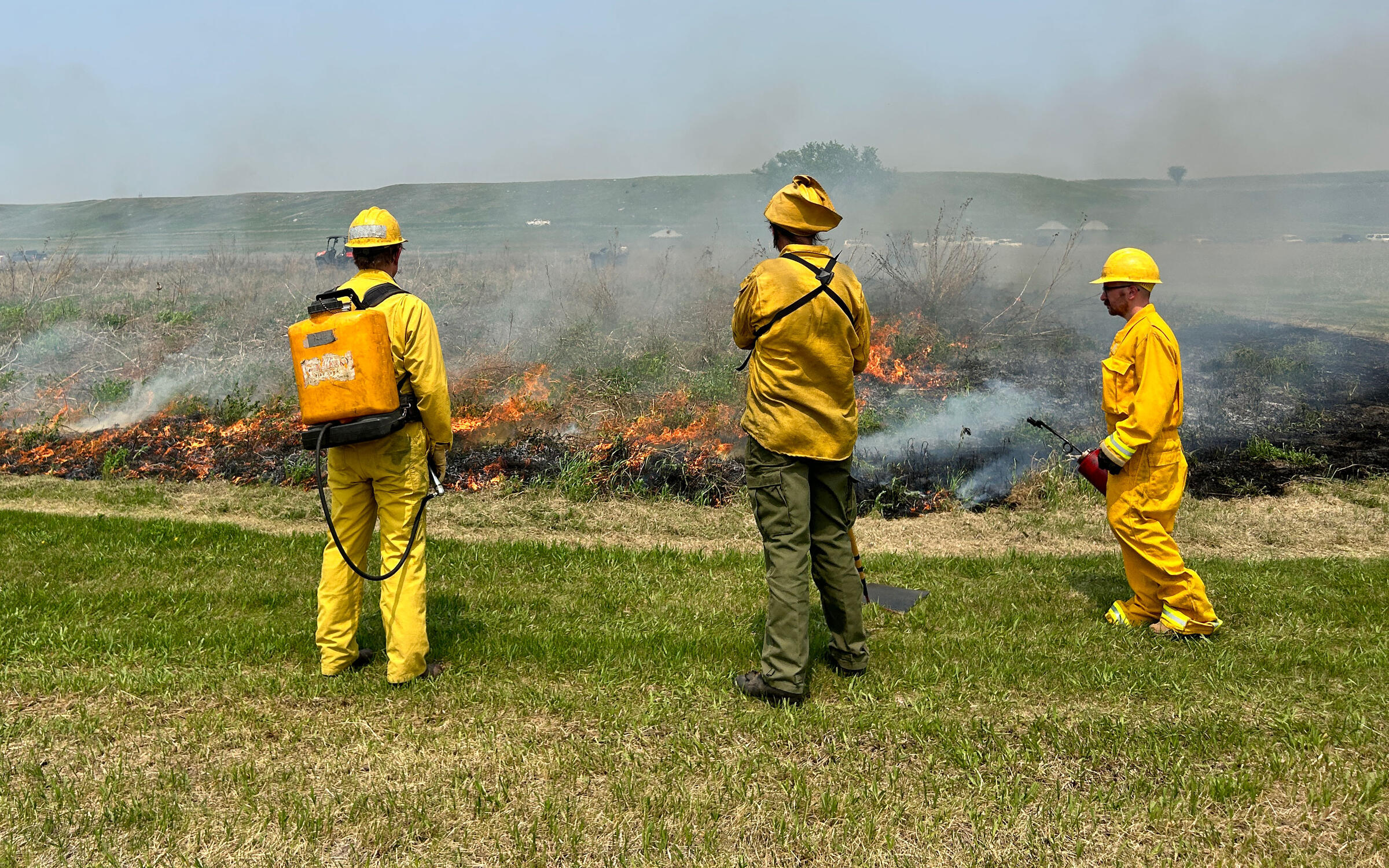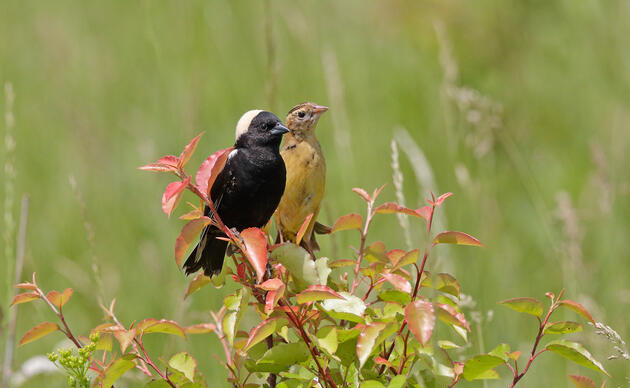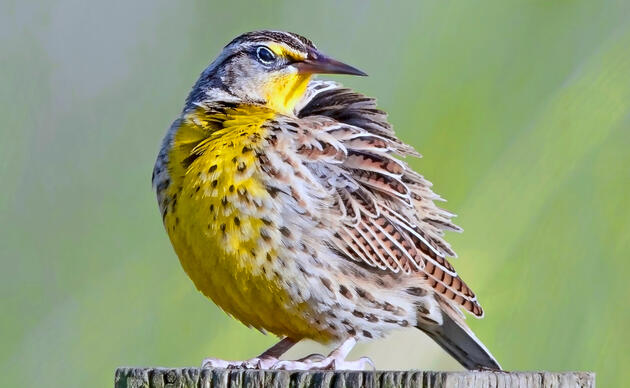Prescribed fire can seem challenging when you don’t know where to start. Learn how to develop a comprehensive burn plan (see example) to conduct a prescribed fire, and burn with confidence, ensuring both safety and effectiveness.
Planning and Preparation
Thoughtful preparation greatly increases the likelihood that the burn will be successful. First, it’s important to start by consulting with local fire or land management professionals to understand the specific requirements and regulations in their area. Next, planning will help you identify the objectives you aim to achieve through the burn, such as promoting quality forage for grazing, defending grasslands from woody encroachment, or managing wildlife habitats.
Once you have identified your goals, a well-structured burn plan is crucial for a successful prescribed fire and should include weather parameters for the day of the fire, maps of the unit and surrounding area, and contact information for emergency personnel and neighbors. Additional helpful information to identify includes information on fuel conditions in the unit, adjacent fuel conditions, existing and constructed fire lines, interior hazards and safety concerns. Having an ignition plan in place identifying the burn boss and authorized by local agencies may be necessary depending on where you live.
Safety Gear
To burn confidently, create an equipment checklist prior to your burn. The burn crew should be wearing personal protective equipment (PPE) including fire resistant pants and shirts, a helmet, eye protection, leather boots, and gloves.
Safety equipment needed for the day of the burn include a digital hand-held weather device, hand-held radios, hand tools including a fire rake, a swatter, a shovel, and a water pump.
-
Digital Hand-held weather device- can identify on-site weather conditions prior to lighting the match and should be able to identify wind speed, temperature, and humidity.
-
Hand-held radios - communication during the burn between the fire lead and the burn crew.
-
Fire rake - used to create fire breaks and can move excess litter or debris in the burn unit.
-
Swatter - The fire swatter is used to suppress any kindling or burning that is close to the firebreak
-
Shovel
-
Water pump- extinguishes small spot fires along the fire break and anywhere that doesn’t automatically suppress.
Roles and Responsibility
For a safe and successful burn, it’s important to identify the crew and helping hands needed. This might be a neighbor for example, and knowing what role they will play. The burn boss is in charge of coordinating with the fire crews, preparing equipment, checking weather conditions, and directing the implementation of the fire. Many experienced burn personnel would say that the best fire is a boring fire, as you already know what is going to happen once you drop the match.
Once you have the plan in place, you can start to prepare the unit for the fire. The burn boss or fire lead, and crew will prepare firebreaks by removing excessive flammable materials, which will include clearing vegetation and using the fire rake removing debris to prevent the fire from spreading beyond the intended area. Avoid discing sod unless you absolutely must, as this disturbance will lead to a lot of weed growth and need regular maintenance in the future. In this instance mowing breaks is a better option. Ideally, a mowed firebreak should have the characteristics of a tightly mowed lawn or, better yet, a golf fairway. It is important to get the breaks short and also remove the excess clippings. Repeated mowing or haying the season prior to the burn will give the clippings time to break down naturally. Pull behind hay rake implements are also effective at pulling materials off to the side and away from the unit.
Conducting the Prescribed Burn
Safety should always be the top priority during a prescribed fire. Establish a communication plan, inform neighboring landowners, local fire departments, and emergency services about your intentions and timing. Assign personnel to specific roles, including a burn boss or fire lead, ignition crew, and holding crew. Before the first match is lit, conduct a comprehensive safety briefing, ensuring everyone understands the fire behavior, escape routes, and emergency protocols.
On the day of the prescribed burn, re-evaluate the weather conditions using the digital hand-held weather device, and confirm that conditions are within your planned prescription, and that all safety protocols are in place. Start ignition on the downwind side as the burned area will give you increased safety as you light further into the wind. Once a safe level of black soot has been established, progressively move into the wind, following your firebreaks, and ensure that the fire is contained within the designated boundaries. Monitor the fire's behavior continuously, adjusting tactics as necessary to maintain control. The crew member with the swatter usually sweeps and pats down areas near the fire break ensuring a safe burn and no fire escapes. Should something unplanned happen, such as an escape from the designated unit, immediately stop ignition, use the safety tools you have to prevent further spreading, and call local emergency personnel if needed.
Post-Burn Assessment and Follow-Up
Continue to monitor the site in the hours and days immediately after the burn is complete, as hot spots can flare up and cause concern in hot, dry, windy conditions. In the weeks and months after the prescribed burn, assess the effectiveness of the fire in achieving the desired objectives. Evaluate vegetation responses, wildlife habitat changes, control of invasive woody or herbaceous vegetation, and the reduction of hazardous fuels. Keep records of the burn, including maps, photographs, and observations, which will aid future planning and adaptive management strategies.
Prescribed fire, when executed with proper planning, can be a safe and essential tool for landowners and land managers. By following a well-prepared burn plan, individuals can harness the power of fire to promote ecological health, reduce wildfire risks, and enhance biodiversity. Remember, safety and adherence to local regulations are paramount in ensuring successful prescribed burns.




